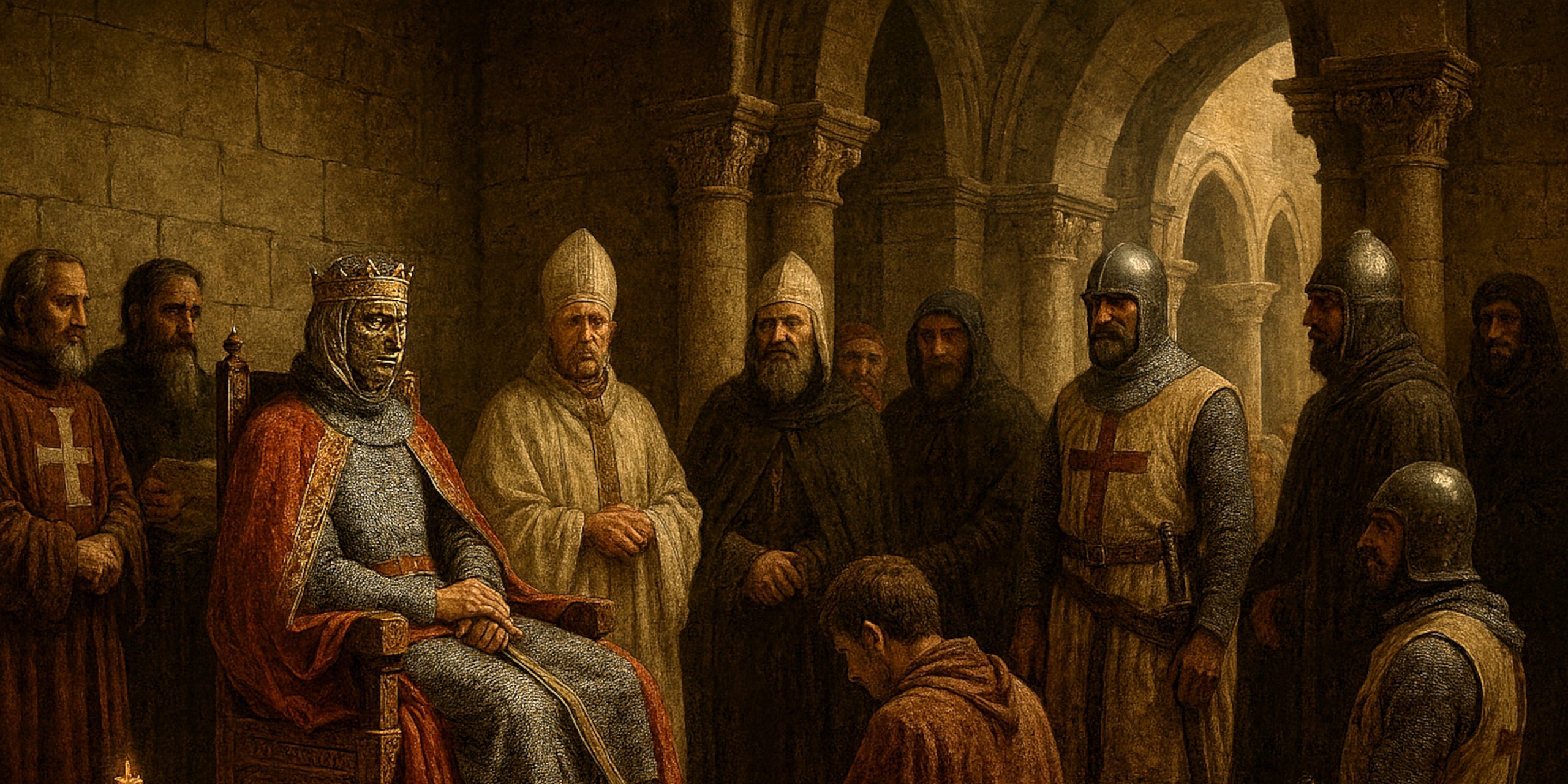
An Insight into the Politics, Personalities, and Power Struggles of Jerusalem’s Leper King
The court of King Baldwin IV of Jerusalem stood at a critical intersection of medieval politics, religious fervour, and military necessity. Though remembered primarily as the “Leper King”, Baldwin’s reign from 1174 to 1185 was defined not by his illness, but by his command of a fragile kingdom caught between crusading ambition and looming Saracen power.
A Kingdom in Crisis
Baldwin IV was crowned at just 13 years old following the death of his father, Amalric I. Despite the debilitating effects of leprosy, Baldwin quickly showed sharp political instincts and surprising military skill. His court, however, was not unified. It was a volatile mix of powerful nobles, Crusader barons, Templar representatives, and foreign dignitaries, all vying for influence in a region where the survival of the Kingdom of Jerusalem was never guaranteed.
Political Tensions and Factional Rivalries
Baldwin’s court was deeply divided between native barons and newly arrived Westerners, many of whom sought advantageous marriages and lucrative positions. Chief among the native nobility were Raymond III of Tripoli, a seasoned noble with ties to the Haute Cour, and the influential Ibelin family. The Western faction, often favoured by Baldwin’s mother, Agnes of Courtenay, included figures such as Guy of Lusignan, whose eventual rise caused discontent.
Baldwin’s illness forced him to rely heavily on regents and advisors, creating further tension. While he remained mentally alert and politically astute, his inability to produce an heir led to ongoing disputes about succession. These arguments reached fever pitch after he named his sister Sibylla’s son, Baldwin V, as co-king in 1183 to forestall civil war.
Court Culture and Governance
The court operated as both a royal household and a centre of government. It was located primarily in Jerusalem, though it followed the king on campaign or during summer retreats to less hostile climates. It hosted emissaries from Byzantium, the Papacy, and the various Latin states, while also managing relations with Muslim leaders such as Saladin.
Baldwin maintained diplomatic relations with the Hospitallers and Templars, who held military and financial power within the kingdom. Though at times he clashed with both, his pragmatic leadership helped balance their influence. His court also included a cadre of clerics, scribes, and legal experts who managed the kingdom’s finances and issued charters in Latin and Old French.
Religious Influence
Jerusalem’s sacred status meant the church played a pivotal role. The Patriarch of Jerusalem was both a spiritual and political figure, often involved in state decisions. Baldwin himself was devout, but he resisted attempts by Rome and the Latin clergy to take excessive control over royal matters. His reign reflected the delicate balance between religious obligation and statecraft in a holy city under siege.
Personal Style and Reputation
Contemporaries described Baldwin as intelligent, brave, and dignified in spite of his disease. William of Tyre, who tutored him as a boy, wrote with admiration about his self-control and maturity. Despite being visibly afflicted, Baldwin refused to be hidden or sidelined, appearing in full armour on campaign and taking part in the Battle of Montgisard in 1177, where his leadership secured a crucial victory against Saladin.
He was known for his fairness in legal disputes and for attempting to mediate between factions rather than exploit them. This sense of justice earned him respect even among rivals.
Intrigue and Succession
In the final years of his reign, Baldwin’s health declined rapidly. In 1183, he briefly abdicated power to Guy of Lusignan, husband to his sister Sibylla, but reversed the decision after Guy’s inept handling of military affairs. The court erupted into crisis. Baldwin disinherited Guy and crowned his nephew, Baldwin V, before dying in 1185 at the age of 24.
The kingdom, lacking Baldwin’s steady hand, quickly descended into infighting. Within two years, Saladin would deliver a crushing blow at Hattin, and Jerusalem would fall.
Legacy of the Court
Baldwin IV’s court has often been romanticised, but it was a place of real political consequence. It functioned under enormous pressure, surrounded by enemies, sustained by fragile alliances, and driven by the personal charisma of a dying king. Though wracked by factionalism, it held together long enough to delay the inevitable collapse of the Crusader states.
Historians continue to debate how much more might have been achieved had Baldwin lived longer or had a reliable successor been in place. His court, though short-lived, remains one of the most compelling episodes in the history of the Crusader kingdoms.



